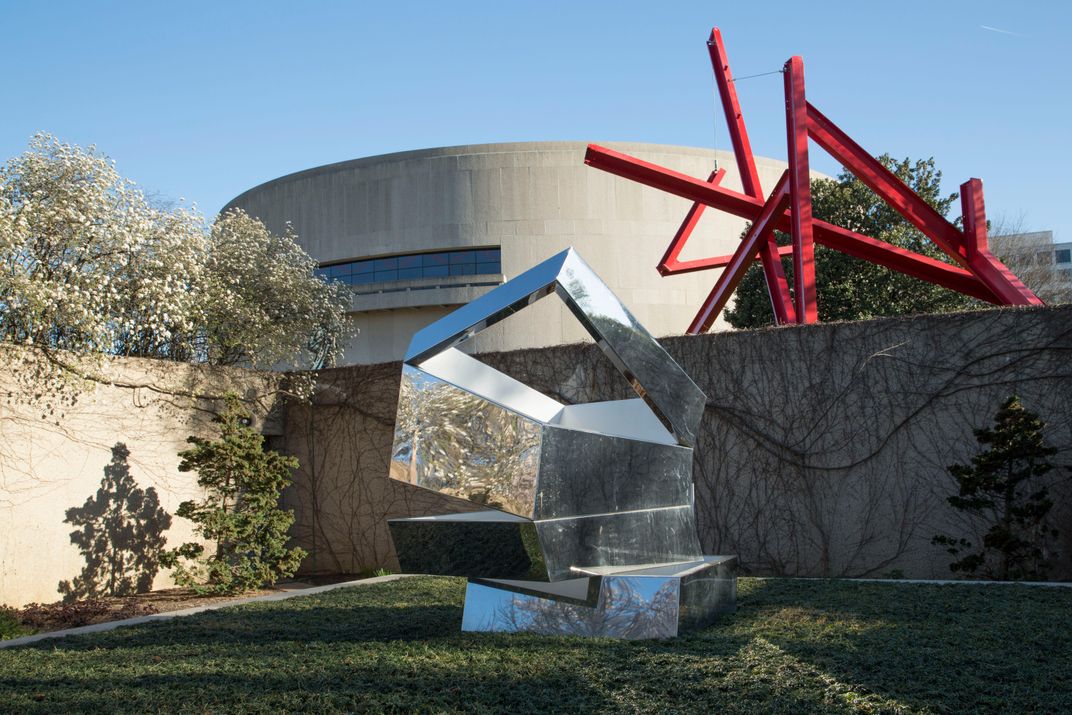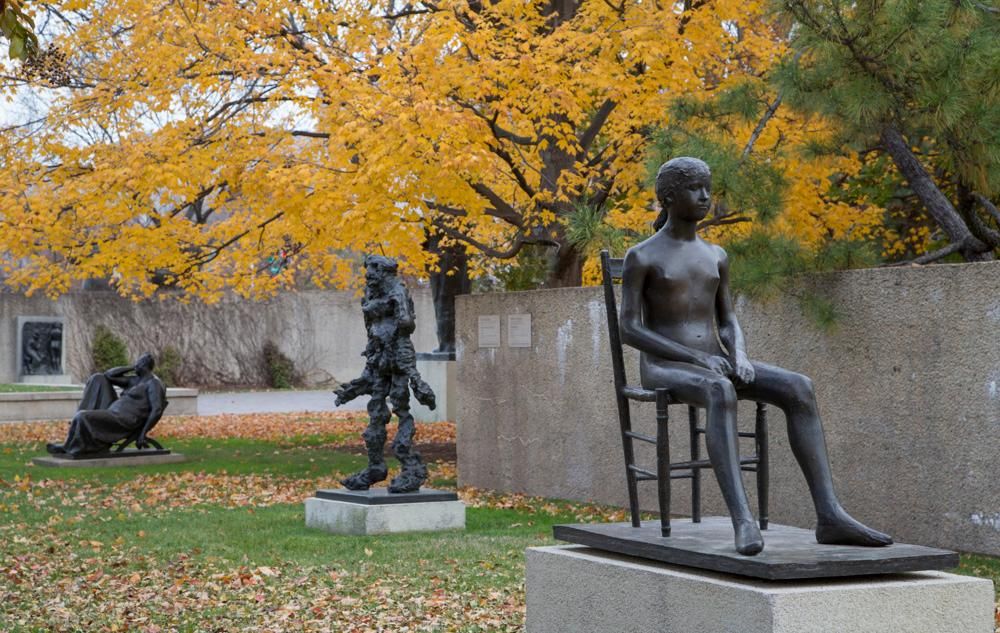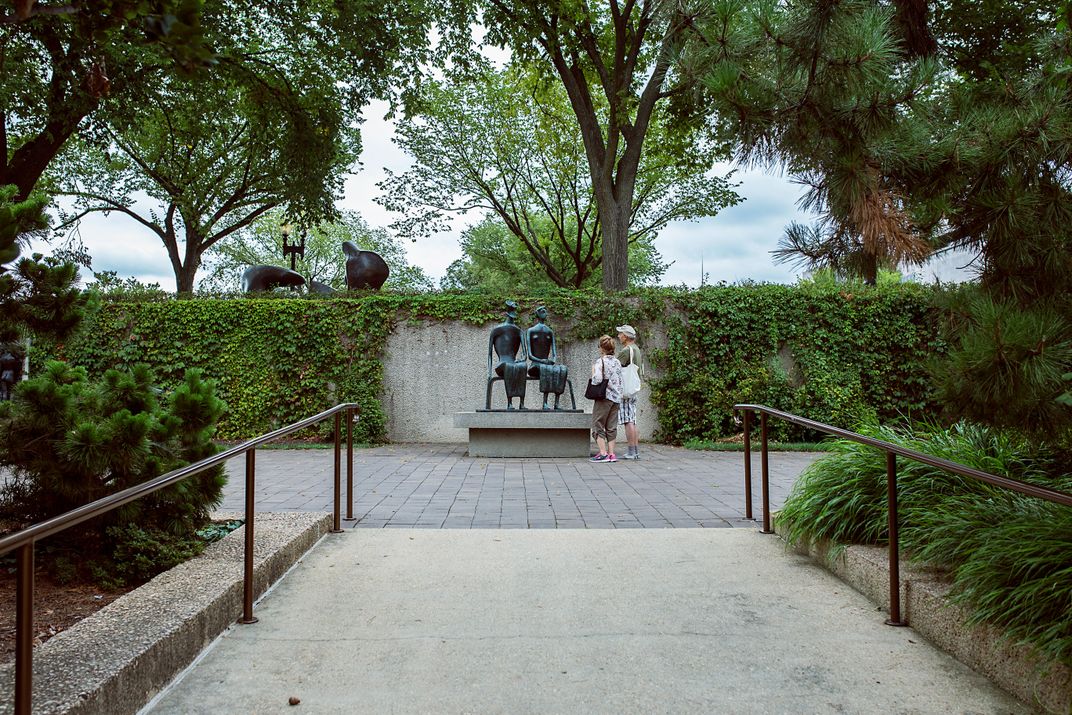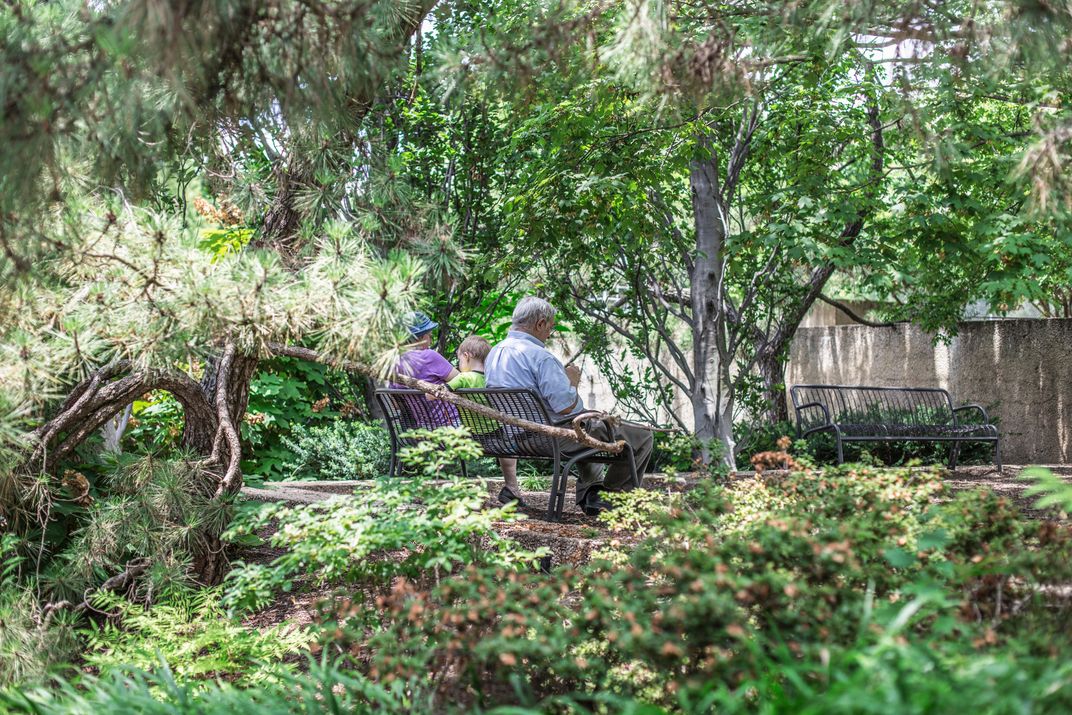Don’t Be Surprised if a Woman Sings to You in the Hirshhorn’s Sculpture Garden
The Smithsonian’s first purchase of a performance art piece is happening now, but the artist requests no photos, please
:focal(2618x1938:2619x1939)/https://tf-cmsv2-smithsonianmag-media.s3.amazonaws.com/filer/97/94/9794b892-981f-4276-b7df-6d347458d04e/hirshhorn-091018-4.jpg)
On a scorching September afternoon in a Washington, D.C. sculpture garden, a young woman stands along an ascending walkway in the shade of nearby loblolly pine.
The only sounds come from an errant bird, a bypassing city bus, and the dueling chimes from ice cream trucks along nearby 7th Street blasting “Fur Elise” and “Turkey in the Straw.” Amid the Henry Moore bronzes, the woman awaits passersby. And when they come she sings a lilting a cappella.
It’s a pop song of vague familiarity, though it also could be something original. It could be a line of a song conjured up on the spot. But almost as soon as she starts, she stops, finishing with the spoken title said aloud: “This You, Tino Sehgal, 2006.”
Reactions vary to the woman’s spontaneous singing. Some viewers rush past. Others linger and acknowledge the surprise individual attention, nodding, thanking or otherwise applauding. Responses are as varied as the song choices.
This is no mere busking, though. It is, instead, the first acquired performance art piece purchased by the Smithsonian’s Hirshhorn Museum and Sculpture Garden. In accordance with the purchase, eight women were trained and perform their four-hour shifts during the nearby museum’s slated hours of admission—and will do so for a six-week run through October 14.
“It’s new for the Hirshhorn,” says Mark Beasley, the museum’s curator of media and performance art at the museum. Only in the last decade have modern art institutions “finally reckoned with the history of performance art from Futurism and Dada through to now, and seen its place and recognized that it needs to be represented.”
When Beasley was hired in 2016, it was understood that the Hirshhorn would begin to acquire live pieces to add to its 12,000-piece collection. And while the London-born Sehgal, who lives in Berlin, is considered a leading performance artist, Beasley says, “he doesn’t call it performance; he calls it a living sculpture.”
“For more than a decade the Hirshhorn has demonstrated a unique commitment to the acquisition and presentation of experimental and new media works,” Hirshhorn director Melissa Chiu said in a statement when the work went on display September 1. “Tino enters the collection at a significant moment, providing fresh insight and further strengthening the museum’s dialogue around contemporary art in all its forms.”
A former dancer, Sehgal began creating what he called “constructed situations” in 2004, making the Hirshhorn’s This You one of his earliest works. In one of his first works, the 2005 This is So Contemporary, hired people which he calls “interpreters” skipped around a museum saying “Oh, this is so contemporary, contemporary, contemporary.” For his 2007 Kiss, he had two people kiss, embrace and strike poses from earlier artists, from Rodin to Klimt.
New York’s Guggenheim Museum was famously emptied of all of its artworks for Sehgal’s 2010 solo show, which included Kiss. For the performance of his 2006 work This Progress, a viewer was greeted on the museum’s rotunda ramp by a child, who asked what the visitor thinks progress is, as they walked up the spiral walkway. Eventually they were met by a high school age “interpreter,” a young adult, and an older adult who took up the conversation.
“It is visually far less concentrated than Kiss—it is even in some sense invisible—but more embracing and filling,” wrote Holland Cotter of The New York Times of This Progress. “I felt stirred up, but light and refreshed, the way I sometimes— but not that often—do when I feel that I’ve met art in some very bare-bones way.”
The movements and gestures of This Objective of that Object, 2004, purchased by the Walker in Minneapolis, involve five interpreters gathering around a visitor, turning their backs and chanting, “The objective of this work is to become the object of a discussion.”
The Hirshhorn piece may be an object of discussion as well, if visitors slow down enough to realize that the singing is part of an artists’ work. Originally, This You was to have been presented on the plaza beneath the museum’s distinctive cylindrical building, Beasley says.
“We looked at it initially, because there’s more activity there, but the work it didn’t seem like the right place,” he said. It was too busy. “When we did it over there, there were people flying around here, there and everywhere; and they might think that somebody’s turned up and decided to sing and you might throw a dollar down or something.”
But tucked into the garden among the bronzes by Moore, Rodin and Arp was more fitting. “That sense of it being a living sculpture or a living statue seemed to sit in this garden much easier and it’s a much more intimate experience,” Beasley says. “It had a different energy, or pace, or sensibility. Here it’s kind of a curious discovery and what you do with that information is up to you.”
One aspect of Sehgal’s work is its lack of materiality—the works are meant to be experiences that reside only in memory. Hence, in an age when museums encourage photos, hashtags and Instagram postings, there’s no photos allowed of the work (although, in another blow against materiality, there are no signs saying so either). Even the sale of the work was done orally, lest there be lingering paperwork.
Sehgal’s work is sold in editions of six or so, plus an “artists’s proof.” There is a set of agreements that the works be up for at least six weeks at a time, lest they be considered a happening, and trainers from his studio come out to cast and rehearse the singers or interpreters, which in the current iteration features Tattiana Aqeel, Erin Frisby, Arielle Goodman, Briona Jackson, Sadie Leigh, Christiana Vandermale, Jahnel Daliya Slowikowski and Lara Supan. Beasley says they sought “people that can hold space and have a connection” with the passersby.
“They’re identifying people as they’re walking down the stairs, or as they’re onto the ramp and they’re instructed to select a single person and in response to some suggestion to them—they’re walking slow, or their ambling or walking with speed, or they look a certain way, they’re agitated or they’re happy or they’re content,” he says.
The piece of music is selected on the basis of how that person is read, he says. “Tino describes it as a gift—it’s a gift to the audience.”
Aqeel, who was a participant in a previous performance piece at the Hirshhorn in 2016, Ragnar Kjartansson’s Women in E in 2016, says this work gives her much more flexibility in choosing how to respond to visitors, and she often throws in parts of songs she has composed with others that come to her. Often, she’ll stop a song mid phrase to plainly state the title “This You, Tino Sehgal, 2006.”
“Then the audience member might say, ‘What was that?’ And then it’s up to the interpreter whether they want to respond. Sometimes they do, sometimes they don’t engage and they pick the next person and it resets itself,” says Beasley.
What might seem as ephemeral as a performer outside a Metro stop becomes, in this context, a much more direct connection between art and viewer, providing a human touch the surrounding Henry Moore bronzes simply cannot.
Washington was a good place for the piece, Sehgal’s only outdoor creation, Beasley says, with no shortage of strong participants to choose from. “From Marvin Gaye and go-go through hardcore,” he says, the city has quite a strong musical history. “There’s a lot of musicians here.”
Beasley said the trainers from Sehgal’s studio also noted that in comparison to other sites for the work, including New York, Washingtonians “had a kind of energy and were very forthright and willing to engage.”
Tino Sehgal’s This You runs through October 14 at the Smithsonian’s Hirshhorn Museum and Sculpture Garden in Washington, D.C.
/https://tf-cmsv2-smithsonianmag-media.s3.amazonaws.com/accounts/headshot/RogerCatlin_thumbnail.png)




/https://tf-cmsv2-smithsonianmag-media.s3.amazonaws.com/accounts/headshot/RogerCatlin_thumbnail.png)